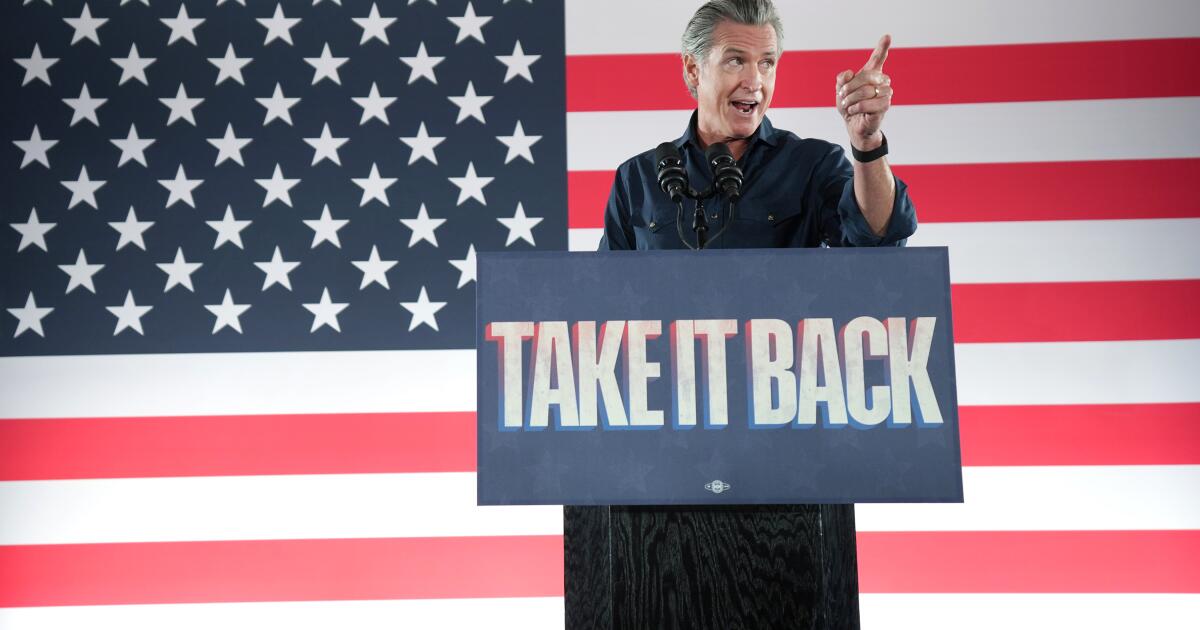SEOUL — President Trump announced on Wednesday that the U.S. had struck a trade deal with South Korea, which will now face a 15% tariff on its exports.
Under the deal, South Korea will invest $350 billion in key U.S. industries and purchase $100 billion worth of its liquified natural gas, Trump wrote on social media on Wednesday. He added that further investments would be announced when South Korean President Lee Jae Myung visits Washington in the next two weeks.
The new rate is a significant reduction from the 25% Trump had announced via a letter earlier this month, but still a blow to the longstanding free trade regime that had, for years, kept duties on goods from either country close to zero. Trump has long decried this arrangement as unfair to the U.S., which last year recorded a $66 billion trade deficit with South Korea.
“We are seeing that the negotiations happening in many countries since April are unfolding in a way that is very different from the principles of the WTO or FTA,” said Kim Yong-beom, a senior policy official for South Korea’s presidential office, at a press conference on Thursday. “It is regrettable.”
Kim said that South Korean negotiators had pushed for a 12.5% rate on automobiles — one of the country’s most important exports to the U.S. — but that they had been rebuffed, with Trump firm on his stance that “everybody gets 15%.”
U.S. and South Korean officials appear to be interpreting the deal — whose details are still scant — in different ways.

New cars for export on a car carrier trailer arrive at a port in Pyeongtaek, South Korea, on April 15, 2025.
(Lee Jin-man / Associated Press)
Calling it an “historic trade deal,” commerce secretary Howard Lutnick wrote on social media that “90% of the profits” of South Korea’s $350 billion investment would go “to the American people,” a claim that has immediately raised eyebrows in South Korea.
Trump said something similar about the $550 billion investment package included in the trade deal struck with Japan earlier this month. Japanese officials, on the other hand, have said the profits would be split proportionately, based on the amount of contribution and risk from each side.
At the press conference, Kim said that Seoul is operating under the assumption that 90% of the profits will be “re-invested” — not unilaterally claimed. He added that the specific terms still need to be laid out on a “per-project basis.”
“In a normal civilized country, who would be able to accept that we invest the money while the U.S. takes 90% of the profits?“ he asked.
South Korean President Lee Jae Myung has framed the $350 billion investment as a boost to South Korean shipbuilding, semiconductor and energy companies trying to make inroads into the U.S. markets.
“This agreement is the meeting of the U.S.’ interest in reviving manufacturing and our intention to make South Korea companies more competitive in the U.S. market,” he said in a social media post on Thursday. “I hope that it will strengthen industrial cooperation between South Korea and the U.S. as well as our military alliance.”
While Trump also said that “South Korea will be completely OPEN TO TRADE with the United States, and that they will accept American product including Cars and Trucks, Agriculture, etc,” Kim said that agriculture was not part of the deal and that no concessions on U.S. rice or beef — two major points of contention between Seoul and Washington — were given.
South Korea, which is the world’s top importer of American beef, currently bans beef from cattle that are older than 30 months on concerns it may introduce bovine spongiform encephalopathy, or mad cow disease.
Given its status as a staple crop and a critical source of farmers’ livelihoods, rice is one of the few agricultural goods heavily protected by the South Korean government. Seoul currently imposes a 5% tariff on U.S. rice up to 132,304 tons, and 513% for any excess.
“We were able to successfully defend a lot of our positions in those areas,” Kim said.




